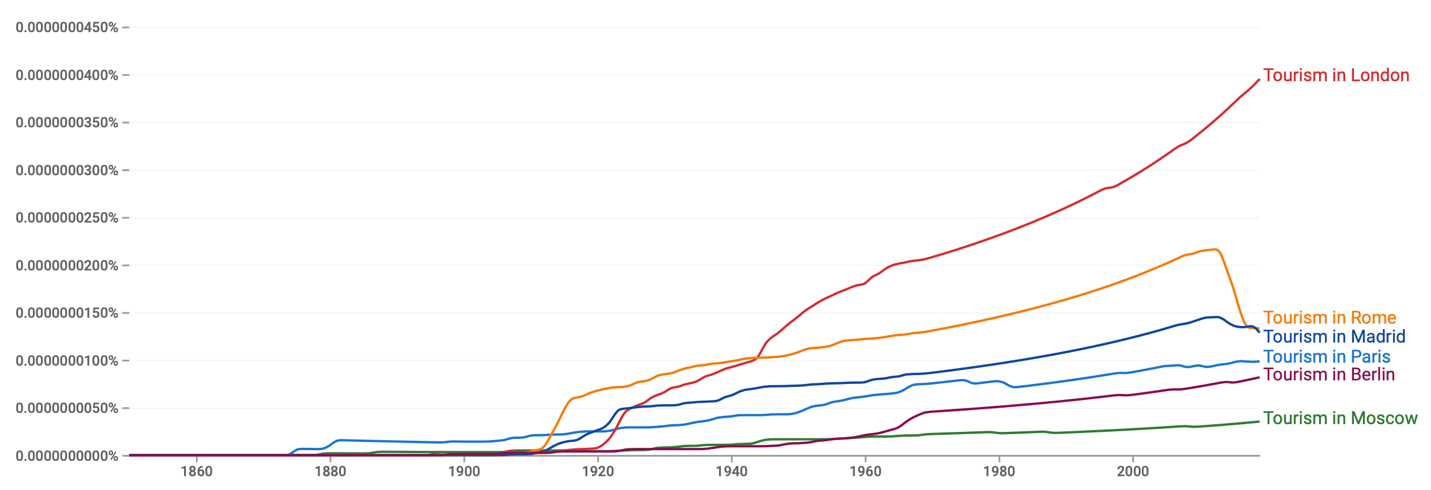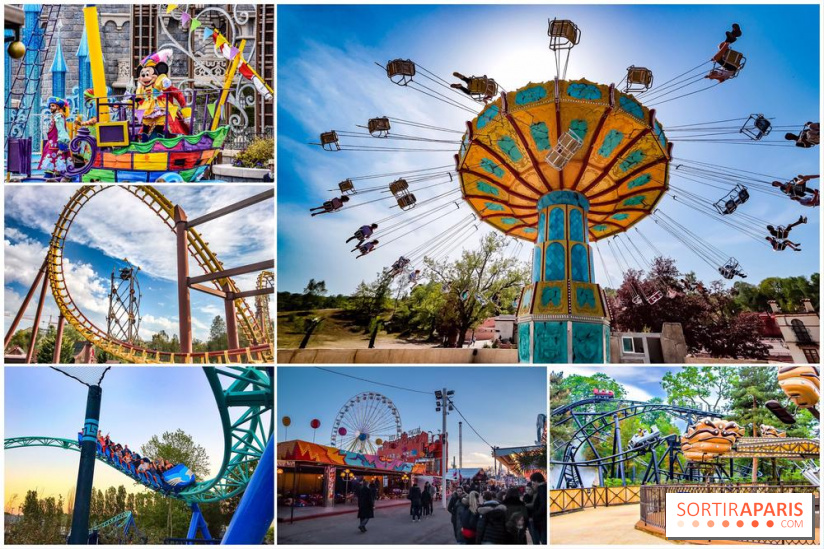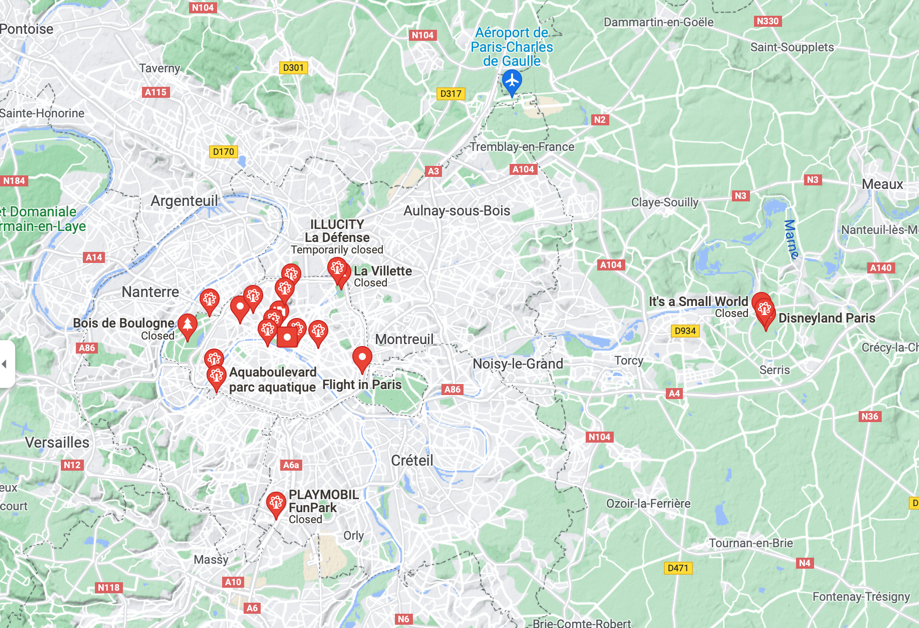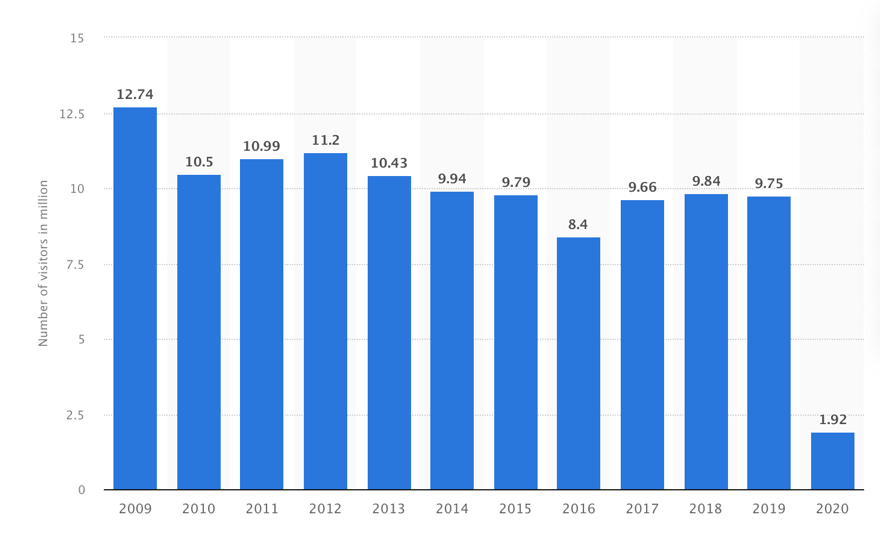Introduction
International tourism is one of the main results of intensified globalization processes, which are characteristic of the modern world. It is difficult to overestimate the importance of tourism for individuals, communities, and humanity as a whole: it brings economic, geopolitical, cultural, and spiritual benefits. Including there are many reasons why people choose tourism. Among some of them, one can mention that foreign tourism helps to learn more about foreign cultures, see different sides of the world, make valuable acquaintances and learn about the history and traditions of other communities. Religious purposes, in addition, have no less value for tourism: pilgrims from all over the world seek to get to the holy places of mythological or historical value.
It is noteworthy that there are several popular tourist destinations at the current moment which attract the highest intensity of tourist flows. The reasons for this phenomenon are artistic culture, the great history of specific regions, or, conversely, the future development of states. Regardless of the specific factor, places of high tourist attraction play an essential role in the national economy, which means that country leaders should take care of the opportunities for uninterrupted external investment in tourism even in the turbulent times of the COVID-19 pandemic. For this essay, Paris has been chosen as one of the most popular global locations attracting tourists from all over the world. This paper consistently and critically discusses the characteristics of the tourism industry in Paris, the economic predictors of high demand, and the prospects for travel to the French capital during the pandemic.
Brief Background Information and the Tourism Industry
The capital of France and a city with a long history, Paris is one of the most popular tourist destinations worldwide. Figure 1 clearly shows that the number of mentions of tourism in Paris among the major European capitals in the press is not the last. There is evidence that Paris is the third most popular city to visit globally, after Bangkok and London (Condor Ferries, 2021). At the same time, according to Law (2020), the Eiffel Tower, located in Paris, is the first among all global attractions to attract foreign tourists. Although the Eiffel Tower brings much foreign investment to the country’s economy, Paris is not limited to it but offers visitors many more options in different categories. As a heritage of Celtic communities, Paris has more than two thousand years of history, which means that throughout the city’s history, a large number of imprints from different cultures have survived. Thus, historical tourism may be one of the main reasons for choosing this destination. The tourist will trace the history of the city and European transformations from the Frankish state and the traces of the Medieval Inquisition to the recognition and promotion of the inviolable freedoms of vulnerable social classes in the modern era.

The tourism industry is one of the most developed among the examples of all world countries. By 2018, the number of foreign tourists visiting France exceeded 89 million (half of them visiting Paris), with a population of 67 million (SRD, 2021). During the pandemic, when the ability to travel was severely limited, the intensity of the external tourist flow to France increased to hundreds of millions (Condor Ferries, 2021). Such data reflect the general trend: France in general and Paris, in particular, remains a popular destination for tourists. Tourism is thus of crucial importance for Paris, and this is reflected in the national spheres dependent on tourism. On the one hand, for the past eight years, except 2020, tourism has contributed an average of 200 billion euros annually to France’s GDP (SRD, 2021). Data reports the creation of more than 27 million new jobs in which professional activities are associated with the tourism industry: restaurants, hotels, services and entertainment, and guides (WTTC, 2020). On the other hand, tourist trips to Paris contribute to the increased emission of harmful gases into the atmosphere. Thus, tourism does not have unambiguously positive effects for Paris, but it also negatively affects communities.
Paris Theme Parks
Paris is indeed multi-faceted, and visitors do not just visit the city because of the Eiffel Tower or the Louvre. One of the essential locations in Paris that also have appeal to foreign tourists are the theme parks. According to Cambridge Dictionary (2021), theme parks refer to designed public spaces where people pay to be in order to be entertained. Babaev et al. (2019) define theme parks as an extension of the ancient tradition of street fairs, and it makes sense: areas of such purpose have a concentration of entertainment and positive emotions that guests experience. Levochkina (2018) adds that theme parks are often built as the quintessential science-engineering achievement of the community. Given the technological complexity of the classic theme park, as shown in Figure 2, it is hard to disagree with the authors.

Theme parks have high importance in the context of the tourism industry for Paris. There are no exact statistics on how many theme parks are located on the territory of the French capital, but a rough count allows to understand that their total number is about 10-15. Disneyland is a grand public square, which is conventionally divided into five countries, each dedicated to five different ideas. However, Figure 3 clearly shows that Disneyland is not the only theme park in the capital, so some tourists may come to explore other spaces as well. Thus, if a tourist’s trip takes several days, they may well visit any of the inner parks as a composite tour.

The variety of theme parks within Paris is excellent: in addition to Disneyland, visitors and residents choose recreational activities. These can be children’s and adults’ games in the parks like Playmobil and La Vilette, or the format of quests in which players must get out of a room within a limited time or find a specific item in the park, using clues. Entertainment continues to be an important goal of tourism, as it provides a significant additional revenue stream to the city’s coffers and brings mental well-being to tourists, encouraging them to return. Psychology shows that the human brain uses mental models to transform experiences into long-term memories: when experiencing vivid emotions while visiting theme parks, the individual’s brain automatically associates them with something beneficial and good (Strijbosch, 2020). This means investing in creating memorable emotions, not necessarily positive ones: it can be fear or fright. Partly because of this, the number of theme parks in Paris continues to grow, as each one gives visitors a unique experience. Having received a pleasant experience in one of the parks, guests tend to visit the others, which creates a favorable effect for the tourist industry.
Modern parks as a form of business perfectly understand the structure of the solvent audience, which means that children cannot be the core of such spaces. Theme parks in Paris are a suitable pastime for families, love couples, and young people. For theme parks, it is not uncommon for friends to gather as tour groups to visit a particular park. In addition, modern spaces in Paris fight for inclusiveness: they expand the possibility of visiting for people with disabilities and people with low mobility. Moreover, Parisian theme parks speak out against stigmatization. This is particularly evident in Disneyland, which holds annual Pride Parades and supports queers (Wieczerzycki, 2021). Thus, the theme parks of Paris find popularity among global tourists and for the reason that they create a favorable environment for each visitor, which expands the target audience.
Determinants of Demand
The previously illustrated data confirm the critical trend: Paris and its theme parks, in particular, are highly popular among both the local population and foreign tourists, who seek to see the attractions of the French capital with their own eyes. It is advisable to begin the study of the predictors of consumer demand for visiting theme parks in Paris with the study of the external environment since foreign tourists make a key contribution to the tourist industry in the city. Thus, two factors should be highlighted among the determinants of the high demand for this subsector: the entertainment industry, encouraged by movies and TV series, and cultural education. The decision to visit the theme parks of Paris, and Disneyland in particular, is primarily due to the wide popularity of this multimedia concern. More than one generation has grown up with Disney cartoons, and children who are now parents still love the products of the multinational media conglomerate (Riley, 2020; Luo et al., 2020). For its part, Disney continues to release new movies and shows that find reflection in the minds of still young consumers. This creates a vacuum in which each family member has a different reason to visit Disneyland Paris, as it renders that they are very closely connected to it. In continuation of this theme, one does not have to be a fan of Disney products to visit a theme park: the theme park structure allows one to enjoy rides and carousels that showcase high engineering. Second, theme parks are representations of a city’s cultural heritage (Zhang et al., 2021; Gulliver, 2021). Walking through such spaces covers tourists’ need to explore new ethnic and intercultural horizons: this is realized through the urbanistic, ergonomic, and leisure skills of urban planners who shape public spaces. The study of theme parks allows tourists to get a deeper insight into the culture of Paris. Thus, two predictors of the external tourist demand for the studied Paris sub-sector are the needs for entertainment and the exploration of new cultures.
The demand to visit theme parks in Paris also comes from the domestic sphere; it also comes from locals. One of the reasons shaping the internal demand is the need for leisure time. It is a fact that urban urbanism must include the entertainment segment because the life of the population in the city cannot be realized effectively without recreational functions (Lee, 2019). Investing in theme parks, whether as a governmental or government-private measure, meets the city’s need to have recreational facilities. Residents want to have fun, which means they are willing to spend money on the entertainment segment. In contrast to external demand patterns, there is a noticeable difference: the intensity of attendance. Disneyland Paris may not be cheap for locals; hence, they may invest in other, less expensive and located within the city limits (Adams, 2019). Another factor in domestic demand is escapism as escaping from current problems (Oh and Kong, 2021). Theme parks indeed immerse the individual in another reality where primary domestic problems temporarily cease to be relevant. It is not difficult to draw a parallel between the desire to escape from reality and the level of perceived stress. In the case of Paris, it has been noted that the local population experiences increased anxiety due to problems associated with terrorism and migrants (Gregory et al., 2019). For this reason, the determinant of domestic demand is to visit the parks to “forget” and “avoid problems.”
Post-COVID-19 Transformation
Although the COVID-19 pandemic has not yet disappeared, humanity is already actively developing means to combat it. For this reason, it is observed that the strictest prohibitions and restrictions are rapidly ceasing to be relevant, and people can once again travel almost freely. This has, in turn, given rise to new problems of discrimination against anti-vaxxers. For this reason, completely unrestricted visits to the theme parks of Paris are still not possible, which affects demand. Figure 4 shows the evolution of the number of guests to Disneyland over the last eleven years: it can be seen that the COVID-19 action reduced the average number by about six times. This statistic is expected to return to normal over the next five years slowly, but a sharp increase is not to be expected, however.

Measures to open national borders and ensure legal passenger traffic to Paris are expected to restore tourist demand among foreign tourists. For example, Disneyland Paris is already open, which means that people from all over the world can buy a ticket and visit the central theme park of the French capital. The same conclusions are also valid for other theme parks, which are also gradually opening to the public. It also means that domestic tourists will also be able to visit their favorite places. COVID-19 is unlikely to cease to be a topical issue within the next five years, but the scale of its spread and its detrimental impact on the global economy is likely to become significantly smaller. It follows that increased tourists will be able to revisit Paris. At first, these will be people who have been vaccinated and have green passports, but soon it is likely that everyone else will visit the theme parks.
In strengthening methods to combat the pathogen, tourist demand is expected to increase gradually, but the speed of this growth matters. Because of the detrimental effects of the pandemic, theme parks as public spaces have been closed, resulting in job losses and reduced profitability of businesses (Kale, 2020). It is not possible to return everything “as it was,” which means the management of such parks must adapt to change. One such method is introducing a QR code system as a pass for people with a certificate of vaccination (FD, 2021). This is an effective measure to create “COVID-free” zones so that one does not have to worry about the possibility of spreading the virus in theme parks. In addition, as private businesses, theme park businesses can count on financial support from the government, allowing them to have additional resources for a smoother recovery (Cœuré, 2021). In addition, the economic stability of such companies depends largely on government measures to open the borders, which means that the lifting of the Paris ban is a positive measure for theme park administrations. It is essential for them to promptly adapt and adjust to the changed agenda to maintain customer focus, avoid fines, and achieve economic growth.
Conclusion
It is worth saying that Paris remains a significant tourist attraction. The theme parks of the French capital are among the critical predictors of increased demand among foreign and domestic tourists. A visit to such parks is always based on the need for entertainment, leisure, or escapism. Before COVID-19, theme parks, and Disneyland in particular, were showing excellent attendance and profitability, but the pandemic brought about a change. Although large and medium-sized businesses were able to survive and adapt, the effects of COVID-19 were significant. Two years after the pandemic began, humanity has already developed some methods to deal with it, and the theme parks of Paris are using this to restore demand.
Reference List
Adams, D. (2019) 8 things a first-time Disneyland Paris visitor should know. Web.
Babaev, A.V., Babaeva, E.V. and Ganshina, G.V. (2019) ‘Modern family leisure activities organization in theme parks,’ Perspectives on Science and Education, 5, pp.345-358.
Cambridge Dictionary (2021) Theme park. Web.
Cœuré, B. (2021) What 3.5 million French firms can tell us about the efficiency of Covid-19 support measures.Web.
Condor Ferries (2021) France tourism. Web.
FD (2021) Applying for a COVID certificate if you were vaccinated abroad (procedure for non-European nationals entering France and non-European students). Web.
Gregory, J., de Lepinau, J., de Buyer, A., Delanoy, N., Mir, O. and Gaillard, R. (2019) ‘The impact of the Paris terrorist attacks on the mental health of resident physicians,’ BMC Psychiatry, 19(1), pp. 1-8.
Gulliver, K. (2021) The evolution of fun. Web.
Kale, S. (2020) Covid-19 restrictions hit Disneyland theme park’s business. Web.
Law, L. (2020) 20 top-rated tourist attractions in the world. Web.
Lee, S. (2019) ‘Systematic approach to theme park,’ Software Engineering and Service Sciences, pp. 190-197.
Levochkina, N.A. (2018) ‘Theme parks and their contribution to the development of territories,’ Earth and Environmental Science, 204, pp. 1-3.
Luo, J.M., Vu, H.Q., Li, G. and Law, R. (2020) ‘Topic modelling for theme park online reviews: analysis of Disneyland,’ Journal of Travel & Tourism Marketing, 37(2), pp. 272-285.
My B., Elodie D., Laurent P., and Cécile D. (2021) Guide 2021 to theme parks in Paris and around. Web.
Oh, J.E. and Kong, A. (2021) ‘VR and nostalgia: using animation in theme parks to enhance visitor engagement,’ Journal of Promotion Management, pp. 1-15.
Riley, E. (2020) 5 reasons to visit Disneyland Paris. Web.
SRD (2021) Number of inbound foreign tourist arrivals in France from 2010 to 2018, by residency area. Web.
SRD (2021) Number of visitors to Disneyland Paris theme park in France 2009-2020. Web.
Strijbosch, W. (2020) From experiencing to experiences: insights from psychology. Web.
Thyebaut, G. (2018) Why France is the world’s top tourist destination. Web.
Wieczerzycki, M. (2021) ‘Power asymmetry and value creation in B2C relationship networks,’ International Journal of Management and Economics, 57(2), pp.161-176.
WTTC (2020) WTTC says France looks set to lose €48 billion from missing tourists and visitors due to pandemic. Web.
Zhang, Z.A., Liang, Z. and Bao, J. (2021) ‘From theme park to cultural tourism town: Disneyization turning of tourism space in China,’ Regional Sustainability, 2(2), pp. 156-163.